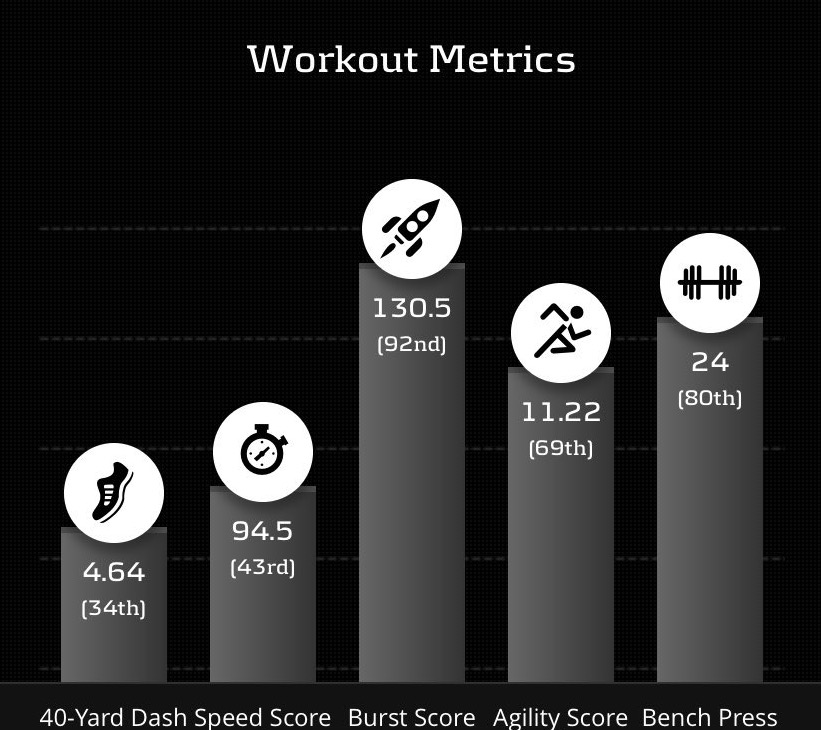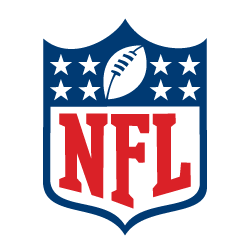Jacksonville Jaguars running back James Robinson is the surprise starter in 2020 as an undrafted free agent rookie. Eric Samulski compares him to UDFA RB Phillip Lindsay to see if Robinson can find similar fantasy football success.
When Leonard Fournette was cut by the Jacksonville Jaguars, there was a lot of speculation about whether Ryquell Armstead, the second-year back from Temple, would be elevated to the starting position on a run-heavy offense. However, Armstead is still battling with COVID-19 and is not ready for game action, so the Jaguars' first depth chart had James Robinson listed as the starter.
Who??? While many were not familiar with James Robinson, the Illinois State product put himself on the map with a strong four-year career and a solid postseason showcase at the NFL Combine and East-West Shrine Bowl. So now the question becomes: do we want to roster James Robinson?
I've tried to consume as much James Robinson content as I could over the past few days and succinctly put together a document that addresses that question. Below we'll look at who Robinson is, what his athletic make-up suggests, how he can contribute on the field, and what his role might realistically be in the Jacksonville offense. Hopefully, after we've covered all of that, it will be clear how we reached the decision that comes at the end of the article.
Be sure to check all of our fantasy football rankings for 2025:- 2025 fantasy football rankings (redraft)
- Dynasty fantasy football rankings
- 2025 NFL rookie fantasy football rankings
- Best ball fantasy football rankings
- Quarterback fantasy football rankings
- Running back fantasy football rankings
- Wide receiver fantasy football rankings
- Tight end fantasy football rankings
Who is James Robinson?
First of all, it might be fruitful to start with an introduction to James Robinson. Robinson is a 5'9" 220 pound all-purpose back from Illinois State who finished his career 2nd in school history with 4,444 rushing yards, 44 rushing touchdowns, and 5,218 all-purpose yards. In his senior season, he racked up 1,899 rushing yards and 18 touchdowns on 364 carries. He only caught 16 passes for 80 yards, but we'll get into more later about why that doesn't concern me too much.

Athletic Profile
What I keep coming back to in his athletic profile is the explosion. Take a quick look at his Combine percentiles:

His 4.64 40-yard dash makes people think he's slow or a plodder, but that's not the case. Yes, Robinson doesn't have elite straight-line speed or the sharpest cuts; however, he hits holes hard and has the athleticism to plant his feet and drive when he needs to. The Vertical Jump and Broad jump numbers above are both evidence of the explosion that he gets from his strong lower body, which helps him rip off chunk plays, even if he's not taking carries 70 yards to the house.
To put it in another visual form:

Again, the straight-line speed is subpar, but a 92nd-percentile burst score and 69th-percentile agility score are evidence of a broader skillset than simply a physical bruiser between the tackles. In fact, his Combine metrics put his athletic profile most closely compared to Ryan Williams, Alfred Morris, Alexander Mattison, Kenneth Dixon, and Rex Burkhead.

While not a sexy list of names, those are running backs who proved (or we assume, in Mattison's case) they can be successful as a team's workhorse. The College Dominator Ranking, which is a measurement of a runningback's ability to dominant the workload and control of a team's offense is also a clear indication of the way that Robinson's athletic profile, while not drool-inducing, allows for him to be an asset in all areas.
Fantasy Skill Set
Despite being a little on the shorter end at 5'9," Robinson plays much closer to his 220-pound frame. He runs low to the ground, with good balance, which allows him to withstand contact and pick up extra yards. Obviously, it's the same skillset that makes him a solid short-yardage or goal-line back since he can get below the defenders' pad levels and drive piles with his strong legs.
As a runner, Robinson's best trait is likely his vision. He has the patience to allow his lineman to open up holes and has the vision and decisiveness to hit them when they appear. The video below is a good example of that:
His feet are quick enough initial to avoid the one defender in the backfield but when he cuts upfield, he takes one or two extra chop steps because he lacks the nimble footwork of a much smaller or more explosive back. Still, he avoids the tackle, has the intelligence to shift his positioning enough to avoid any real contact from the defenders, and then has enough speed to finish the run. It's not a "Wow" play, but it's a smart run by a good football player.
Despite a limited role in the passing game, Robinson has shown soft hands and the ability to gain yards after the catch.
He has soft hands - which he also showed in postseason workouts - and here his vision comes into play again as he sees the first defender before his head is really fully turned around. He is able to run through the ensuing ankle tackle and mediocre body bump from the safety before seeing the cut back lane and his blockers. Another instinctive play that leads to a big gain and a score.
It's important to keep in mind that, when you have a record-setting running back, who is averaging close to six yards per carry, you may not feel the need to have him catch passes that often. It's that old adage, "if it ain't broke..." However, Robinson's tape and his postseason workouts suggest that he can absolutely be a factor out of the backfield. He's not going to be Austin Ekeler, but remember that Fournette caught 76 passes for 522 yards last season, and there is nothing in Robinson's profile that suggests he isn't capable of doing the same.
Lastly, Robinson has proven himself to be reliable in pass protection, approaching his blocks with a low based and the same aggressiveness that he runs with. While this doesn't seem like a fantasy trait, it's good news because it will help him to stay on the field in all downs, except for third-and-long (which we'll discuss more later).
Team Rushing Usage
Doug Marrone likes to run the ball. It was true when he was in Buffalo and has remained true since he took over as the Jaguars head coach in 2017. That first season, the Jaguars ran the ball 517 times. In 2018, that number dropped to 416 times, which was just about league average. However, that season Leonard Fournette played only 8 games. In the first six games that Fournette played, the Jaguars were in the top-10 in the league in rushing attempts.
However, there was a shift last year as the Jaguars were 23rd in the league in rushing attempts. Part of the reason for that is Gardner Minshew. The rookie ran for 344 yards on 67 carries, none of which count towards the team's total that earned them the 23rd overall ranking. Another factor was the decline of the Jaguars' defense. In particular, the once-vaunted secondary dealt with injuries and departures and rose to 17th in passing yards allowed after being a top-10 unit prior; they also only intercepted 10 passes, which was 7th-worst in the league.
As a result of this, the Jaguars threw the ball 589 times, 12th-most in the league, after throwing it 536 times in 2018 and 527 times in 2017. As a result, the Jaguars overall have become a slightly less run-heavy team.
Which might also be because of their weakness up front. Coming into the 2020 season, Pro Football Focus names the Jaguars as the 26th best offensive line in the league. Based on Football Outsiders' metrics, the Jaguars were fifth-worst in the league with 3.88 adjusted line yards (team yards per carry based on what was blocked). They were 20th overall in Power Blocking and had 20% of their runs stuffed at the line of scrimmage, which was good for 23rd in the league. Right Guard A.J. Cann seems to be a particular weak point and the team needs more from Left Guard Andrew Norwell, who was the fifth-highest lineman in the league but earned the 17th-best grade among guards.
The team isn't trending in the right direction, but, based on Marrone's track record, I believe he wants to be able to run the ball. If the defense and the offensive line can take a step back in the right direction, I think it's feasible that the Jaguars' passing attempts go back closer to 2018 levels.
Potential Workhorse Role
However, when the Jaguars run the ball, Marrone tends to feature one back. They ran the ball with a non-QB 315 times last year, and Fournette toted 265 of those carries, which was good for 84.1%. He was on the field for 844 snaps, which was third-most in the league for an offensive player, and his 82.5% of the team's overall snaps was good for fifth-most. He was the definition of a workhorse.
In 2018, Fournette was only active for eight games. In the six games where he was healthy and completed the entire game, Fournette took 71.4% of the team's carries. In 2017, Fournette played only 13 games but carried the ball on 268 of the team's 459 carries; yet, in weeks 1-6 (before he got hurt), he handled 130 of the team's 179 non-QB rushes (72.6%).
All of which is to say, the Jaguars under Marrone have historically operated with one main back. Now, it would be foolish to assume that Robinson takes Fournette's 82.5% snap share, but the only other backs who are competing with him for snaps are similarly unproven Devine Ozigbo and third-down back Chris Thompson. To top it off, Ozigbo didn't even practice on Wednesday because of a hamstring injury which would all but ensure that Robinson is the starter and main ballcarrier for week one. If he comes out of the gates hot, there is no reason he couldn't take on the 71-72% of the team's carries that Fournette totaled in 2017-18.
Red Zone Opportuities
What makes Robinson's potential role even more attractive is the red zone usage. Marrone's preference for running the ball also showed up a lot once the Jaguars got inside the 20-yard line. Fournette was 6th in the NFL in red zone carries last year with 46 carries inside the 20-yard line. He was also 6th in the NFL with 68.7% of his team's red zone carries.
Despite no longer being as run-heavy as they had been in the past, Jacksonville threw the ball 70 times in the red zone in 2019 and ran the ball 67 times, which equates to 51.1% pass and 48.9% run. As mentioned above, Fournette saw 46 of those carries, Gardner Minshew had 10, and Ryquell Armstead had 8, mostly, when Fournette was injured. Ozigbo had the other three, totaling five yards and no score.
Ozigbo is also a bigger back at 6'0" 225 pounds, but he had only 77.8% positive runs last season and gained only 44.4% of yards after contact, both of which are well below average.

Obviously, last season was an incredibly small sample size, and Ozigbo does have the power to move the pile, but his height (6'0") might actually be a disadvantage there since Robinson is just as strong but runs lower to the ground and can get beneath the opponents' pad levels. If the rookie proves that he can be effective in short-yardage situations, the red zone role on this team could add even more value to his fantasy profile.
Limited Passing Game Role
With all the positive information we've given about Robinson, it's time to call out a glaring negative: the addition of Chris Thompson. Jaguars' offensive coordinator did not bring his Chris Thompson with him from Washington if he wasn't planning to use him.
The 29-year-old has averaged 4.0 yards per carry over his career but makes his money in the passing game. He's caught at least 35 passes in every NFL season where he's been a member of a committee, totaling 350 yards or more in three of five. He has an elite drop rate (0 last year) and saw 12.5% of Washington's targets, which was among the best at the running back position.
Thompson has some of his own weaknesses, the most important of which is that he can't seem to stay healthy. However, when he's on the field, he also uses his elusiveness far more than strength or vision. In fact, Thompson only broke 10.8% of tackles last year, which was a below-average number, a surprise for an athlete as dynamic as he is. Still, he is going to remain a consistent part of the Jaguars' passing game as long as he is healthy, which will cut into Robinson's potential snaps and workload.
Final Verdict
Overall, there is a lot to like here, if you keep your expectations in check. Robinson is an undrafted rookie from an FCS school on a team with a mediocre offensive line. If the blocking in front of him isn't good, Robinson isn't going to consistently make guys miss in the backfield and put together big gains. He's smart and instinctive enough to avoid taking big losses, but he's going to need some help.
Where I believe Robinson has value is that he will consistently drive the ball forward and pick up those extra yards. He will take the right angles and make the right decisions to avoid big lost yardage, and he has good enough hands to chip in a few receptions each game and keep a defense honest. When you pair that with his potential role as a goal-line back and Jacksonville's trend towards using one main running back, I think you could be looking at 12-15 carries and 2-3 receptions a game plus goal-line work.
That's a great running back to have on your bench and deploy in the right matchups where his share of the carries could mean that the total rushes climbs up closer to 20. If I come out of drafts with Robinson has my RB5 (or RB4 in deeper leagues), I would be extremely happy.
Download Our Free News & Alerts Mobile App
Like what you see? Download our updated fantasy football app for iPhone and Android with 24x7 player news, injury alerts, rankings, starts/sits & more. All free!


 RADIO
RADIO

























